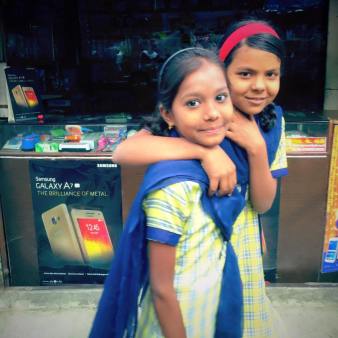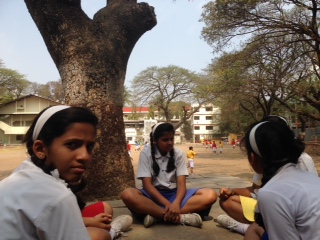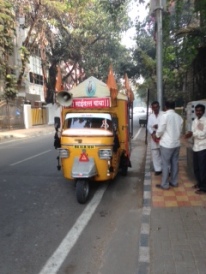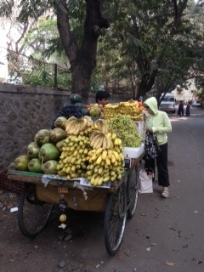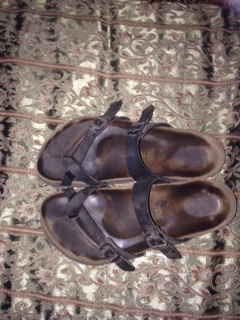
What an absolutely outstanding class – backbends with Abhijata. Her teaching is completely focussed; she gets through the poses, gives clear and relevant teaching points, paces herself perfectly so that there is time for all the inversions but still gives plenty of reference to yoga sutra and philosophy. She pushes you hard but is not at all intimidating. I am in awe and extremely grateful for her efforts – she is striving for and attaining excellence.
Once again I found myself in the position of having my pressing yoga needs miraculously met. As I mentioned previously, I ‘lost’ my sirsasana through having to relearn from scratch and spend some months working against a pillar. Every day for two years I have been trying, retrying and trying again to work it out – perhaps I need 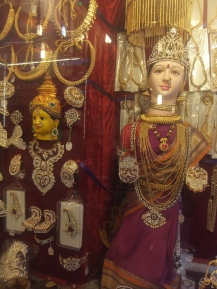 a tri fold blanket, perhaps I need to stand on some height in ardha sirsasana to get the dorsal working properly, perhaps I just need to sweat it out, and on and on. I’d pinned a lot of hopes on this month for sorting it out and was feeling an increasing sense of desperation that I am still experiencing real problems. I had been working with Jenny to get some feedback on what she sees and thought I had cracked it, but as I solved one problem, another one popped up. Yesterday I issued a silent prayer to Guruji. The first thing that happened was someone posted a 40 minute clip of Guruji teaching sirsasana on Facebook. In it he teaches about the ‘brain’ of the forearm and how this area has to be pressed inward to make the shoulders respond. I finally got a real sense of stability and lift. Then in Abhi’s class today she continued this teaching, refining the point still further (full sequence attached below). Any remaining fears I had about going up in the centre of the room were completely banished by at least 12 drop backs, building up another layer of instruction each time we went up, until I felt so much more accomplished in the pose. It was just fantastic.
a tri fold blanket, perhaps I need to stand on some height in ardha sirsasana to get the dorsal working properly, perhaps I just need to sweat it out, and on and on. I’d pinned a lot of hopes on this month for sorting it out and was feeling an increasing sense of desperation that I am still experiencing real problems. I had been working with Jenny to get some feedback on what she sees and thought I had cracked it, but as I solved one problem, another one popped up. Yesterday I issued a silent prayer to Guruji. The first thing that happened was someone posted a 40 minute clip of Guruji teaching sirsasana on Facebook. In it he teaches about the ‘brain’ of the forearm and how this area has to be pressed inward to make the shoulders respond. I finally got a real sense of stability and lift. Then in Abhi’s class today she continued this teaching, refining the point still further (full sequence attached below). Any remaining fears I had about going up in the centre of the room were completely banished by at least 12 drop backs, building up another layer of instruction each time we went up, until I felt so much more accomplished in the pose. It was just fantastic.
Yesterday I was telling Jenny I feel like I need another month here as I have so, SO much I need to work on – my hips aren’t gripping, my knees are dropping inward, my shoulder blade and trapezius have popped up – all of these things needing sustained and focussed attention to put right and that’s on top of my daily Diabetes programme, my injured knee, my broken sirsasana and my preparation for Senior 1 assessment. It felt overwhelming. Today Abhi spoke about how recognising what is wrong is actually a positive sign; she quoted Guruji who said “Once we have recognised our ignorance, the discipline can begin”.
Towards the end of the class we repeated full arm balance and the pose felt amazing – students in the class said it felt much ‘lighter’ but that was too mundane a word to capture how it really felt – my whole body felt suffused with a sparkling awareness.
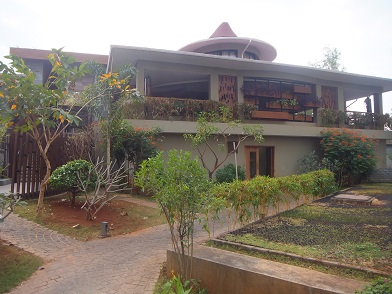
The Ambrosia Resort
After class we packed our bags, booked an OLA cab and headed off to the Ambrosia Resort for an overnight stay – to swim in the pool and enjoy the sunshine. Our cab arrived but the driver didn’t speak English and there seemed to be some problem that was preventing him from leaving. After much fuss, 2 passers-by hauled in to help us translate, 25 minutes of confusion later, it transpired I had accidentally booked 2 cabs and he couldn’t leave until I had cancelled one. Finally on the road, our sunbeds beckoning we headed out for a 40 minute drive on the Mulshi Road. When we got there it wasn’t such a nice environment as I’d hoped – very built up and a building site all around and they had messed up our booking and only given us one room. 20 minutes later we had that sorted and asked to be shown to the pool. Blank looks, “The pool? No pool mam!” Turns out the pool had closed down and a new inside pool is under construction. There was absolutely no reason to be there except for the pool, so thoroughly disappointed we explained that we no longer wanted to stay and asked them to book us a cab home again, giving The Ambience Hotel, Model Colony as the landmark. One hour later the cab finally arrived – they’d booked us the budget option – no air con and no seat belts. Still we’d waited so long we weren’t about to complain and off we went. We thought it strange that we were in such an unfamiliar looking area, it’s a drive we know fairly well and sure enough the driver pulled up outside a completely different Ambience Hotel in entirely the wrong district of Pune. We had been extremely clear about our instructions, but it turned out that when the Ambrosia had booked the cab, they had provided a written address (sadly completely the wrong one) that the driver was following and so he just hadn’t listened to what we said. Off we sped again – it’s extremely alarming to be driving at such speed in such busy traffic with no seat belts on – at one point I actually hissed at the driver and tapped him sharply as he got distracted by his mobile. So several hours later we arrived back home hot, sweaty and dusty and many rupees lighter and trudged upstairs to our apartment to unpack. Ah well, off to the Mariott tomorrow instead. I soothed myself by making some toasted nut, seeds, dates, cocoa and cream coconut truffles and next weekend we will try a visit to Panchgani.
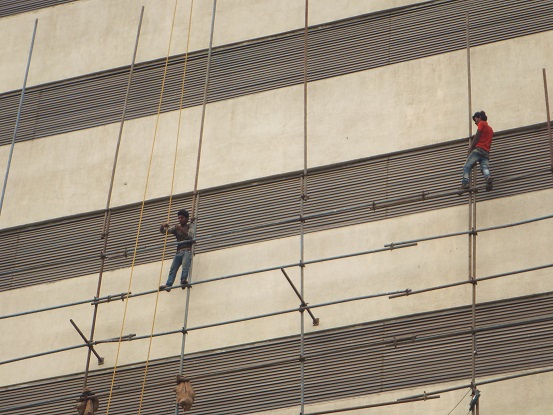
These construction workers are many storeys up on tower, balancing on single scaffold poles!
20th February – Women’s Class – Abhijata
AMS – you are aware that you have an outer hand and an inner hand? And you are aware that each individual finger has also an outer and an inner? Where does the weight fall? The outer? So now press strongly the inner thumb first finger root and the inner blade of each individual finger. Does this give you the access to your shoulder blades? Lift the pose from the buttock bones themselves – move the buttock bones into the skin there.
Full Arm Balance (those waiting urdhva mukha svanasana) – Where does the weight fall? Maintain the weight completely on the inner hand, thumb and first finger to go up. Lift the buttock, heels hips. Then press even more strongly and lift even more strongly so that for a moment you balance and come down with 2 legs.
Sirsasana – Where does the weight press more on the forearm bone – inner or outer? And when you go up can you see how even though you intended to press, the weight oscillated? Roll the outer elbow to the inner elbow to lengthen the upper arm. Weight strongly to the inner forearm bone PRESS and hold absolutely firm there as you come up – Better? Now you have an inner shoulder and an outer shoulder, which is higher? Outer? So now lift the inner shoulder to the level of the outer shoulder. The whole shoulder girdle has to lift.
Parsva – 1) The BACK leg (the side you are not turning to) has to drive the turn 2) The side you are turning to, that shoulder tends to drop, lift up there 3) The back leg tends to shorten lengthen it UP.
Parivrtta Eka Pada – The front leg is quick to go, make the back leg go faster. Extend the back leg from the root of the thigh. When we came back to the centre she made us maintain the legs apart so that we could clearly witness how the back leg was up in no time, whereas it took longer to lift the front leg as it had further to come.
She said there is a tendency of the hands to sweat – why are the hands sweating? All they have to do is press down – Guruji once made her do with a weight on her hands so she got the message how much the hands to press down.
Ustrasana – Hands on lower buttock 1) 1st kneeling – roll the outer knee towards the inner knee, this lengthens the outer thigh. This also makes more space in the back of the knee when you come up. Kneel up keeping toes/ ankle junction pressing. Lift up the back thigh away from the back knee to maintain the space there.
2) The head should not go back like a dead weight with the contents of the throat puffing up – you are inviting a glandular problem there. Begin to arch back coiling the upper spine deep inward. Now wait and pull the trapezius strongly downward, shoulder blades pressing IN, now dorsal deeper in still maintaining the trapezius downward, take the head all the way back.
Urdhva Dhanurasana – 1) Which part of the body lifts up fastest? for most it was the inner body, so we went again and the outer armpit, outer hip, outer knee had to lead to lift up. 2) Walk feet in 3) walk hands in 4) She demonstrated as we walk in and lengthen the inner heel down, the outer bottom thigh, close to the outer knee drops. It was a completely different action to roll the bottom outer thigh up to extend the inner heel down. 5) Hit the shin bones to the calves 6) Walk in until you feel you can’t go anymore, until you are going to die (without the top buttock moving towards the waist) and combine all of these actions.
Sirsasana dropping back 1) Roll outer thighs, outer knees upward to drop back 2) Press inner blade of wrist to drop back 3) Broaden and densify the clavicles to drop back 4) Coil the dorsal deeper and deeper in to drop back. 5) ALL of these actions combined to drop back.
Point the toes towards the floor to drop back, otherwise brain is resisting the movement.
AMS feet together into eka pada extending the lower back to stretch that leg back and up/ UTT
Full Arm balance – different? – everyone said it was much lighter. My whole body was sparkling with awareness.
Parsva Uttansana
Parivrtta Trikonasana – stepping the legs one forward, one back, take the hand down and take the lower side body towards the floor to turn – not a gross action turning, but the lower body spreading away from the spine. AMS UTT tadasana, step legs, other side.
Sarvangasana – back neck had to be extended for the brain to quieten, take your hands and use them to lengthen the back skull away from base of neck. Extend arms back and catch the thick mats (if your arms are long just turn palms to face down) and lift shoulder blade up. Bend the arms palms facing, roll the outer elbow to the inner elbow and lengthen the upper arm. Keep upper arms long, lift shoulder blade and place hands lower down on the back. Go up maintaining these actions. Take legs apart, roll front groin to back groin and extend inner leg upward to join, lift outer hips up. Extend heel bone up and keeping heel bone prominent lengthen toes keeping the foot soft.
Paschimottonasana / Janu Sirsasana / Paschimottonasana – blanket for the diaphragm NOT head or abdomen. Spread the diaphragm and move the SIDES of the diaphragm forward on the blanket. If necessary lift the head slightly up in order to keep the diaphragm moving forward and pressing
Malasana to uttanasana in the utt release the ears to hang downward, most people need to bring the bottom ear inwards towards the body to get true sirsasana position – she said ‘as if I was going to insert my index fingers into your ears to roll you down there, then keeping the chin down and brain quiet stand up and then lift the head to stand straight. x 2
She spoke about how these techniques provide access points or doorways for you to go deeper into you – for you to make the journey inwards and not to get pulled outwards by the senses of perception. When we are totally absorbed in an asana the brain becomes submissive to the body and we become present.
She talked about how Guruji was still working on the simple poses – still finding out what was happening inside when he did trikonasana at 95. Don’t dismiss the simple poses because you can do – nature ebbs and flows so there is always something different to discover internally.
She talked about the different types of student (sadhaka), they are feeble (mrdu) average (madhyama) superior (adhimatra) and supreme(adhimatratama). The adhimatratama sadhaka is closest to enlightenment. It is not about the level of attainment, what you can or can’t do. It is not about that at all – it is about the effort, the zeal you put into your practice.
Guruji quote “Once we have understood our ignorance the discipline can begin” Extremely salient quote for me as yesterday I was seriously lamenting just how much I have to work on – my hips are not gripping, my inner knees and caving inwards and my shoulder blades and trapezius have sprung up – and feeling defeated.
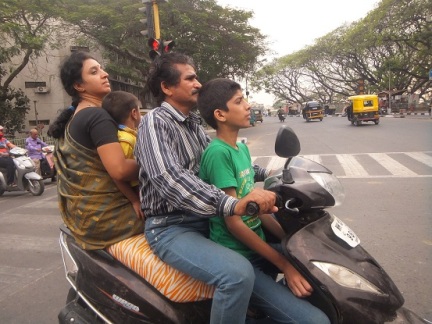
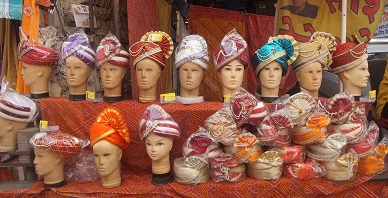 glad to get out without a serious bash, we scarcely minded that he charged us three times the correct rate (“It’s a holiday today Maam”) or the fact that we were not actually at our intended destination. He dropped us somewhere on the Ravi Pewar Road in a district of Pune I’ve never seen much of before. Here you got a real sense of the history of the place – narrow streets and characterful buildings that have stood for centuries. Here even more so than elsewhere in Pune you can see many of the old trades completely unchanged by modernisation.
glad to get out without a serious bash, we scarcely minded that he charged us three times the correct rate (“It’s a holiday today Maam”) or the fact that we were not actually at our intended destination. He dropped us somewhere on the Ravi Pewar Road in a district of Pune I’ve never seen much of before. Here you got a real sense of the history of the place – narrow streets and characterful buildings that have stood for centuries. Here even more so than elsewhere in Pune you can see many of the old trades completely unchanged by modernisation.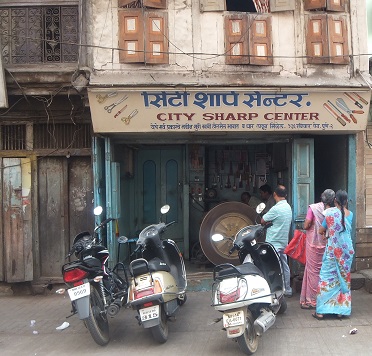



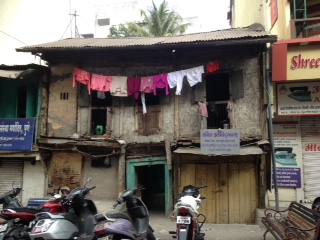
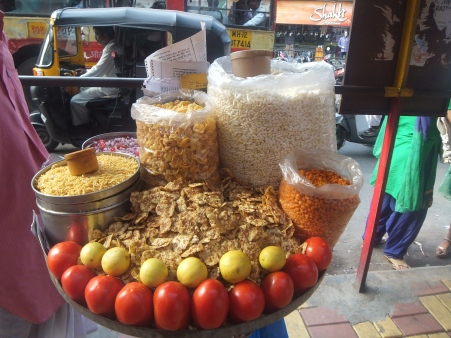
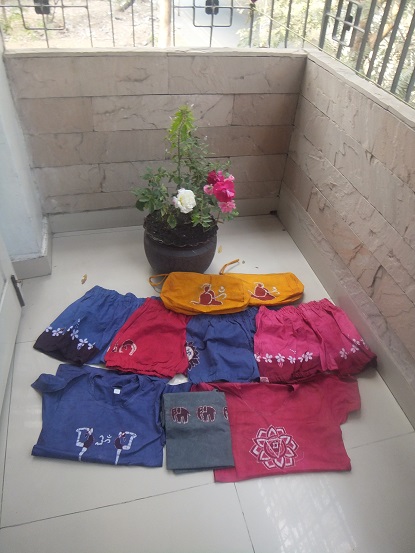
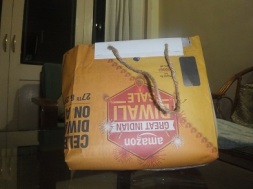 rural charity and sold for profit. Perfect. They also offer a parcel service where they’ll package your order up for you and send it to your home country – even you can order from home and pay with an ordinary English cheque or bank transfer. They are able to make T Shirts with your studio name on to order, as well as belts, bolsters and blankets for excellent prices see
rural charity and sold for profit. Perfect. They also offer a parcel service where they’ll package your order up for you and send it to your home country – even you can order from home and pay with an ordinary English cheque or bank transfer. They are able to make T Shirts with your studio name on to order, as well as belts, bolsters and blankets for excellent prices see 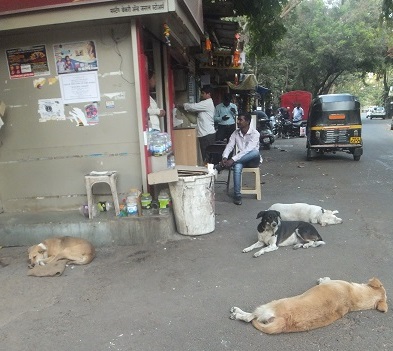
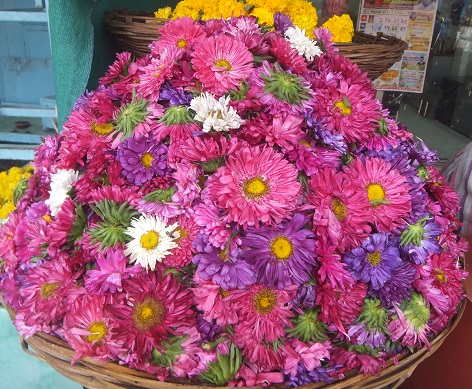
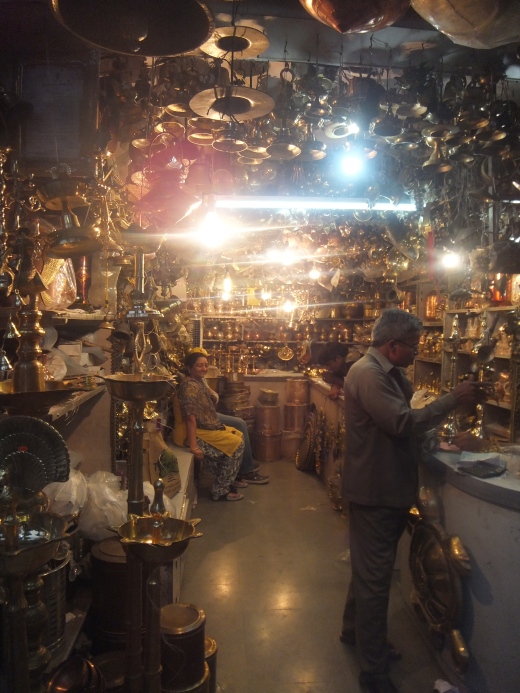
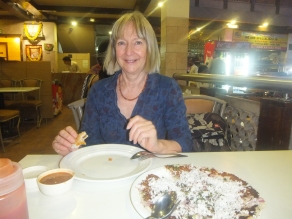 India as they are so much cheaper than back home. Kitchen stuff is great here and the market is full of it. I managed to find the exact stainless steel pressure cooker I wanted, which is about £60 back home for a mere £15. I love the printed cotton bed sheets that they use in India which I’ve never seen used back in UK and I managed to find the very same one as I have on my bed in my apartment. Once we were all done in we went to the Agatya food hall for a lassi and coconut uttapa. It was a relief to get back to the apartment and I finished the day with a restorative session of inversions to make up for what we missed in class this morning.
India as they are so much cheaper than back home. Kitchen stuff is great here and the market is full of it. I managed to find the exact stainless steel pressure cooker I wanted, which is about £60 back home for a mere £15. I love the printed cotton bed sheets that they use in India which I’ve never seen used back in UK and I managed to find the very same one as I have on my bed in my apartment. Once we were all done in we went to the Agatya food hall for a lassi and coconut uttapa. It was a relief to get back to the apartment and I finished the day with a restorative session of inversions to make up for what we missed in class this morning.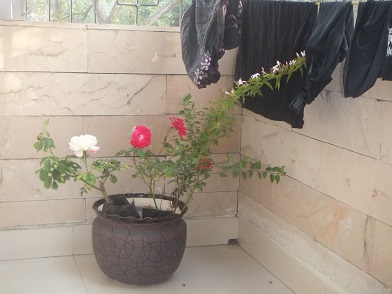
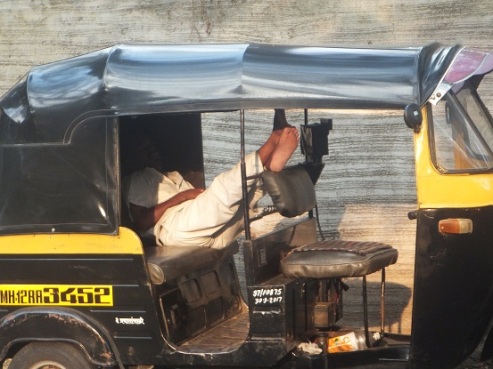
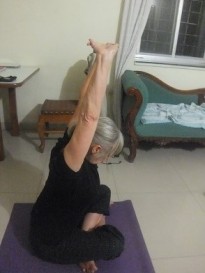
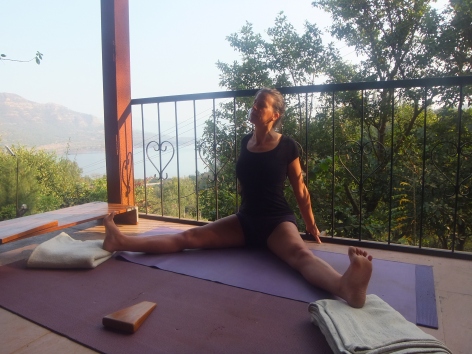
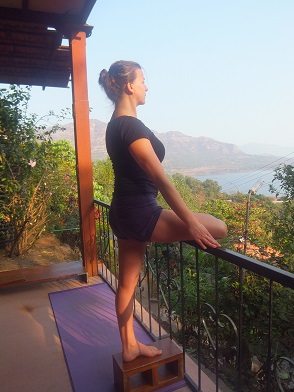
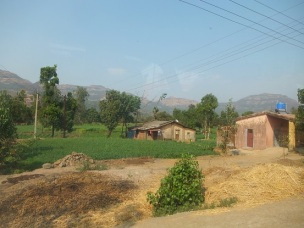
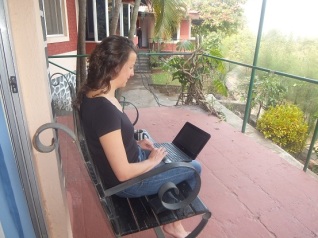
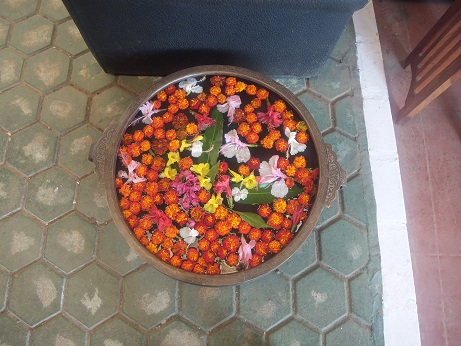
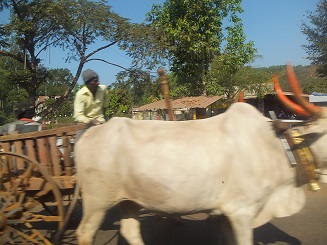
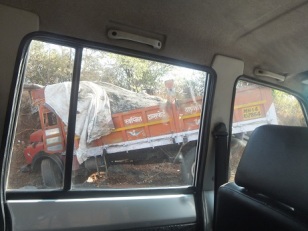 farmsteads with hay crofts and oxen and women tending the fields. The road began to climb steadily upward and became increasingly bumpy – we passed a truck whose weight had caused the driver to lose control coming down the hill and he’d ploughed into a corner with his load pushing into the back of the cab. The driver sat disconsolately aside, presumably awaiting some kind of assistance.
farmsteads with hay crofts and oxen and women tending the fields. The road began to climb steadily upward and became increasingly bumpy – we passed a truck whose weight had caused the driver to lose control coming down the hill and he’d ploughed into a corner with his load pushing into the back of the cab. The driver sat disconsolately aside, presumably awaiting some kind of assistance.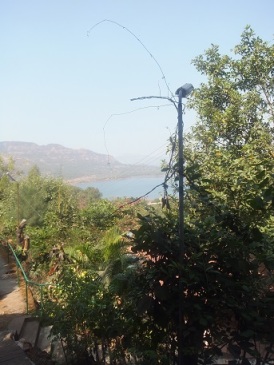



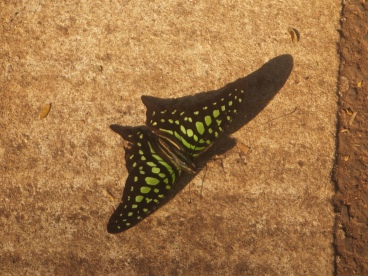
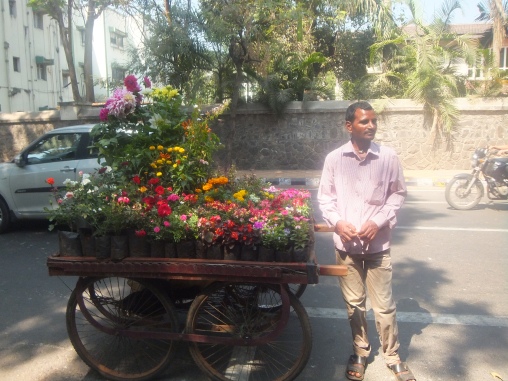
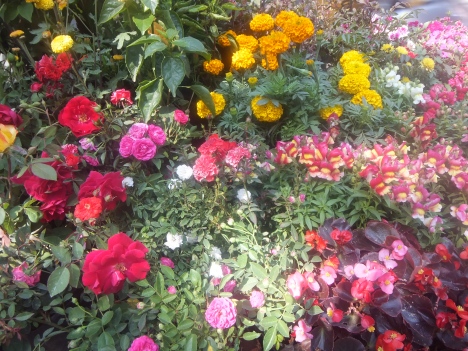
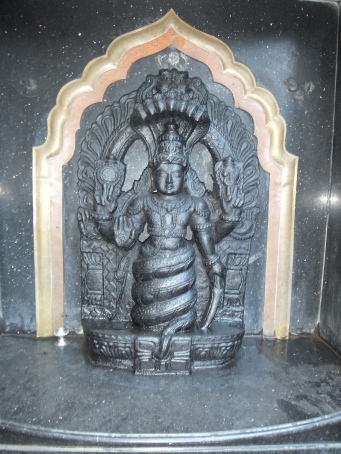
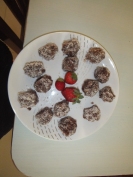
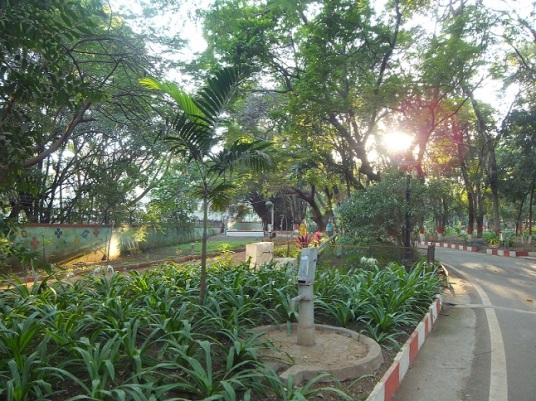
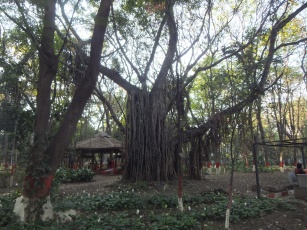 I think this must also be how such a variety of birds continue to flourish here, despite the intrusion of so many people, so much traffic pollution and noise. Also there hasn’t been the same modernisation of agriculture that has caused such a problem for birdlife in the western world.
I think this must also be how such a variety of birds continue to flourish here, despite the intrusion of so many people, so much traffic pollution and noise. Also there hasn’t been the same modernisation of agriculture that has caused such a problem for birdlife in the western world.